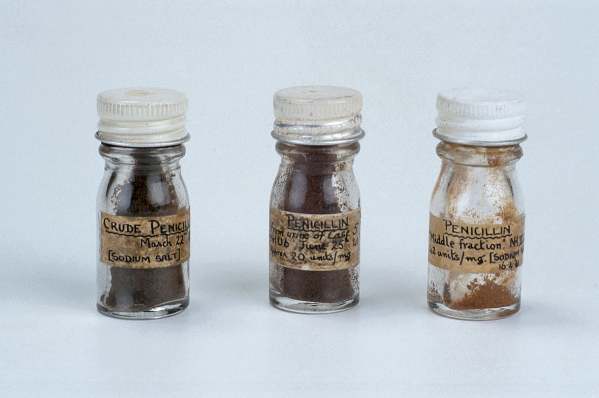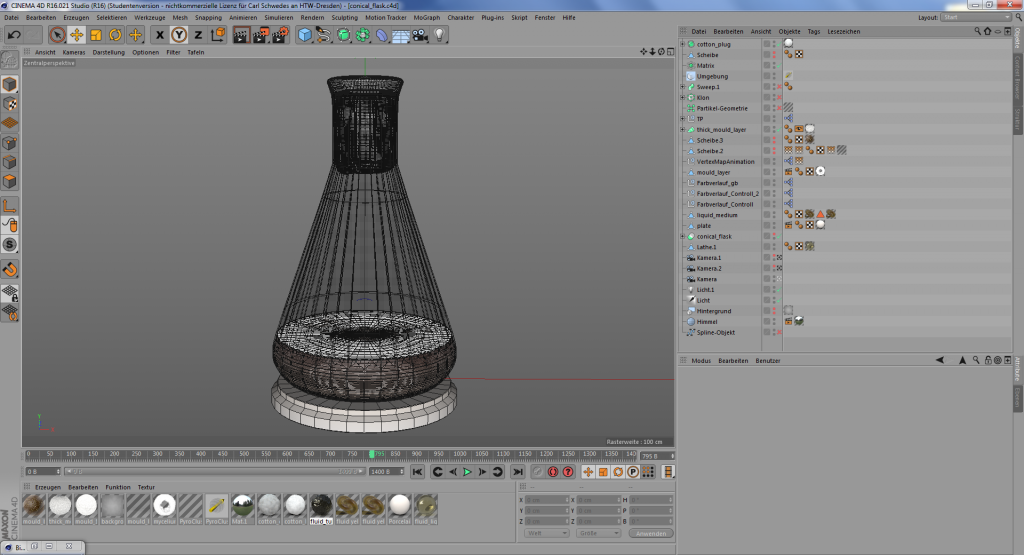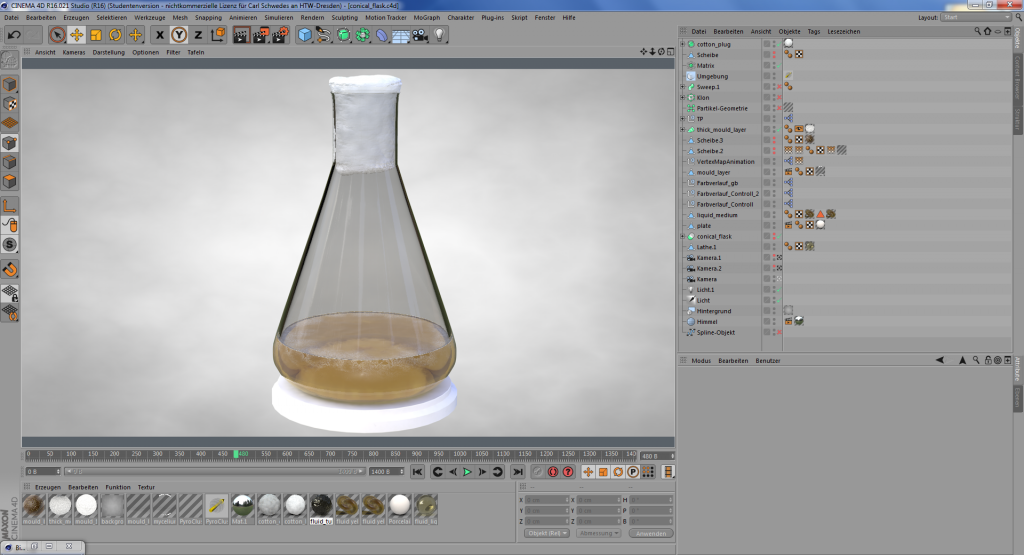Penicillin productions

Penicillin may well have saved your life. This ‘yellow magic’, as it was first known, is an antibiotic wonder-drug of a type we now take for granted. But when penicillin was first being developed and refined, here in Oxford around the time of the Second World War, its healing properties were little short of miraculous.
As the Longitude Prize now seeks ideas to combat global antibiotic resistance, the importance of life-saving antibiotics like penicillin is back on the agenda.
The Museum’s collection holds some very important artefacts from the pioneering Oxford research into penicillin and we are currently working with computer science student Carl Schwedes to digitally reveal the processes used in that early research.
Here, we show some of Carl’s animation work in progress and he explains a little about his digital production techniques.
*
By Carl Schwedes
I study computer science with media at the HTW-Dresden, the University of Applied Science in Dresden, and I am currently working with the Museum of the History of Science in Oxford. The creation of animations and 3D worlds is one of my favourite activities, so it is great to be able to work for the Museum to create new digital content relating to their collections.
Oxford, and especially the Sir William Dunn School of Pathology, is the origin of the development of the penicillin drug, a substance referred to as the ‘Miracle Drug’. The work of Howard Florey, Ernst Chain, and Norman Heatley in Oxford was instrumental in turning Alexander Fleming’s ‘accidental’ discovery of penicillin in 1928 into a reliably harvestable and safe drug for the treatment of patients. Their work, during the constrained period of war, saw some amazing successes with the small yields they were initially able to produce at the start of the 1940s.
Only a year or two later, it was possible to produce the penicillin substance at an industrial scale in the USA: the threat of war in Europe meant the USA was a safer place to build new industries for this production.
I work with MAXONs Cinema 4D, Adobe software, and After Effects to create the animations that show the penicillin production process that was happening in Oxford in the early 1940s. The visualization of the first production step of the whole penicillin animation was a good challenge for me.

Creating the flask animations
I have used Cinema4 D’s Pyro-Cluster module for the foggy shape inside of the liquid at the start of the video. It was a good method to show how something starts to grow inside of this liquid-medium, building to a more complex shape with several mould layers by the end of the animation. It was quite tricky to combine these several materials and planes in combination with Vertex Maps to one big morphing system.
For the post production, I render the crude scene with illumination and textures in several layers in Cinema 4D, then combine this with After Effects. This multi-layer or ‘multi-pass’ rendering helps to correct and adjust the final look of the video.

The animation above illustrates the first of six different steps in the extraction of the precious penicillin substance from the mouldy broth, which finally ends up as a crystal structure in a solid form. The video is being produced especially for the Museum for use as an educational tool and in a planned special exhibition on antibiotics.
Further stages in the animation will be revealed here as they are completed.
Carl Schwedes